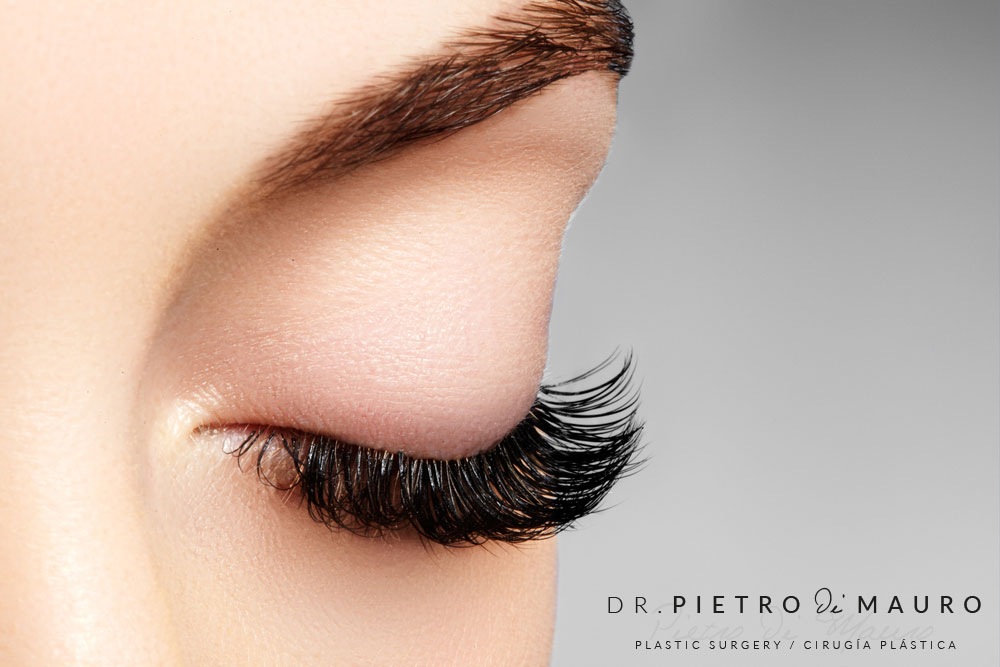Everything you need to know about Eye Lift surgery and what you should be asking your surgeon
Sun exposure, genetics and the general ageing process can make the skin surrounding our eyes appear tired, sagging and less than fresh. As the skin starts to sag, some men and women can find themselves sporting what´s commonly referred to as “bags” under their eyes, while others have the sagging centred above their eyes, giving an overall tired look.
If you are interested in finding out more about this popular and very successful surgery, Dr. Pietro di Mauro has rounded up all of his patient´s frequently asked questions.
What exactly is an eye lift?
When you´re talking to someone, have you ever noticed that you look into their eyes, and not normally at their mouth or nose? So, if your eyes have a tired or saggy appearance, it can make you look older or less engaging. An “Eye Lift”, also known as blepharoplasty is more of a generic term for surgery on the upper lids, though there is also a type of eye lid that addresses the bags beneath the eyes to help you look fresh, radiant and younger. A dramatic difference for a typically uncomplicated and simple procedure.
In upper blepharoplasty, an incision is made to the upper eyelid and the desired amount of skin and fat is removed, before adding a thin stitch to bring the skin together again. Some people have uneven eyelids; this too can be corrected so that both of your eyes look the same.
In lower blepharoplasty, an incision is made to remove the fat and skin, tightening and shaping the orbicularis oculi muscles below the eyelid and then stitched.
Ask your surgeon…
On some occasions, your surgeon may recommend an aesthetic procedure to compliment your eye lift surgery, in order to refresh your facial features. Facial lipofilling or facial revitalisation techniques could be beneficial.
How is it done?
During an eye lift excess skin is removed and perhaps some fat and muscle, depending on the patient. Your surgeon will mark a portion of your eyelid and snip away the skin, before closing the incision with stiches. As the skin naturally folds into the eye lid, the scars are hidden away.
If you decide to have under-eye bags taken away, it is a little more complicated and usually involves a sedation. Your surgeon will make an incision by going between the eyeball and eye lid and moving the tissue to redistribute the fat.
Ask your surgeon…
Think of your goals before you book your initial consultation. What do you want to achieve? Eye lift surgery can enhance your appearance and build your confidence, but it might not result in your ideal look or alter your facial structure. It is important to be completely honest with your goals and feel able to talk through all of your concerns with your surgeon.
Recovery after surgery?
Typically, the recovery from an eye lift procedure is straight forward with a shorter recovery time than, say a breast augmentation. A week or so after the procedure patients have their stitches removed and during this time, we recommend time off work to recover and for any swelling to subside. It´s also important not to exercise or do anything strenuous during these first couple of weeks. Patients should expect bruising to fade after a couple of weeks. During the recovery time, your surgeon will need to see you to check you are healing well and comfortable. If you wear contact lenses, you won´t be able to wear them for a couple of weeks after the procedure.
Ask your surgeon…
If you have imminent plans to travel or big plans on the horizon, it is important to tell your surgeon, who is in the best position to tell you if you should make any changes in your calendar.
What should I expect from the results?
• You can eliminate the general puffiness under your lower eye lids and the hooded skin above
• You may eliminate any vision issues related to overhanging eyelids
• Any scars are hidden in the natural creases of the eye lid
Ask your surgeon…
• Are the results I want achievable?
• Can I see some before and after photos for this procedure?
• What do you expect of me, in order to achieve the best results?
• What are the risks and complications associated with this surgery?
• What are my options if the results don´t meet the goals we agreed on?
If you book a consultation with Dr. Pietro di Mauro, he will listen and consider your reasons for having surgery and your expectations. This assessment is just as important as the physical assessment of your skin.
After you have finished your consultation with Dr. Pietro di Mauro, you will have all the information you need to make a choice about the surgery.


